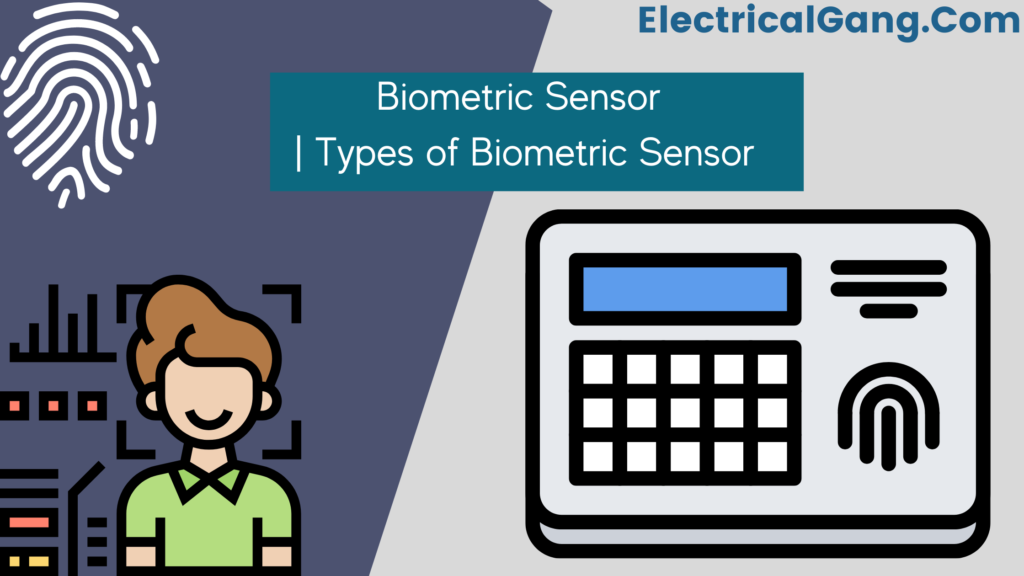
The word biometric is derived from the word in the original Greek. Bio means life and metric mean to measure. Biometrics are used to identify the physical and practical characteristics of a person. This method of identification is preferred over traditional methods. PIN number and password are therefore included for their accuracy and case sensitivity.
Depending on the design, this system is used as an identification system or identification system. This system is divided into different types. Examples of veins include fingerprints, hand geometry, DNA, voice pattern, rainbow pattern signature dynamics, and face detection. In today’s article, we will see what is biometric sensors, different types of biometric sensors and their function will be discussed in today’s article.
Biometric Sensor:
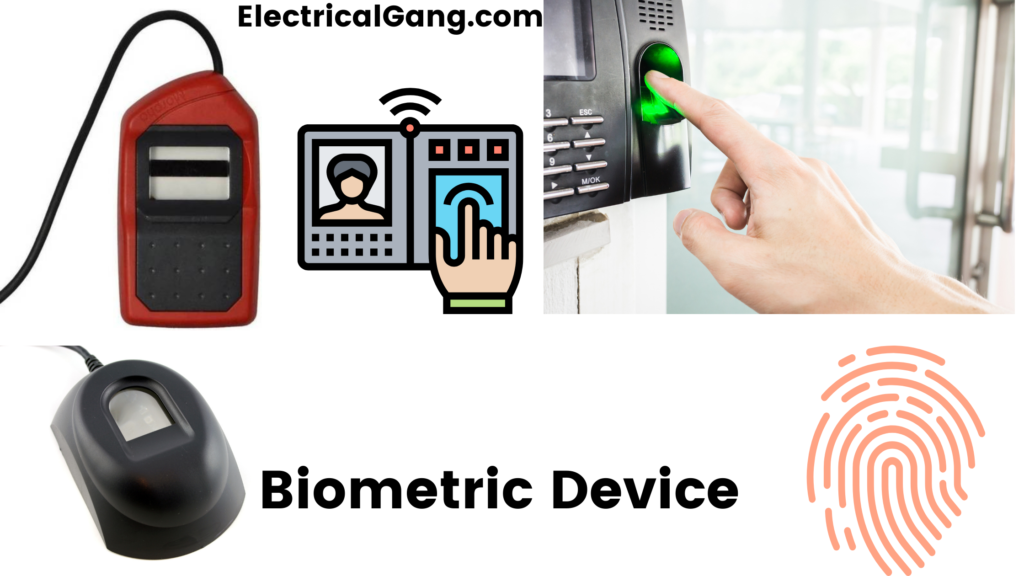
A biometric sensor is a transducer that converts a person’s biometric treatment into an electrical signal. Biometric transactions mainly include a biometric fingerprint reader iris, face, voice, etc. Sensors usually read and measure light, temperature, speed, electrical capacity, and other types of power.
This conversation can be done using a variety of technologies using sophisticated combinations, sensor networks, and digital cameras. Every biometric device must have a type of sensor. Involved primarily in the biometric application. In a high-definition camera for facial recognition or in a microphone for voice capture.
Some biometrics are specifically designed to scan veins under your skin. Biometric sensors are an essential feature of identification technology.
Don’t Miss: What is a Motion Sensor | Types of Motion Sensor
Types of Biometric Sensors:
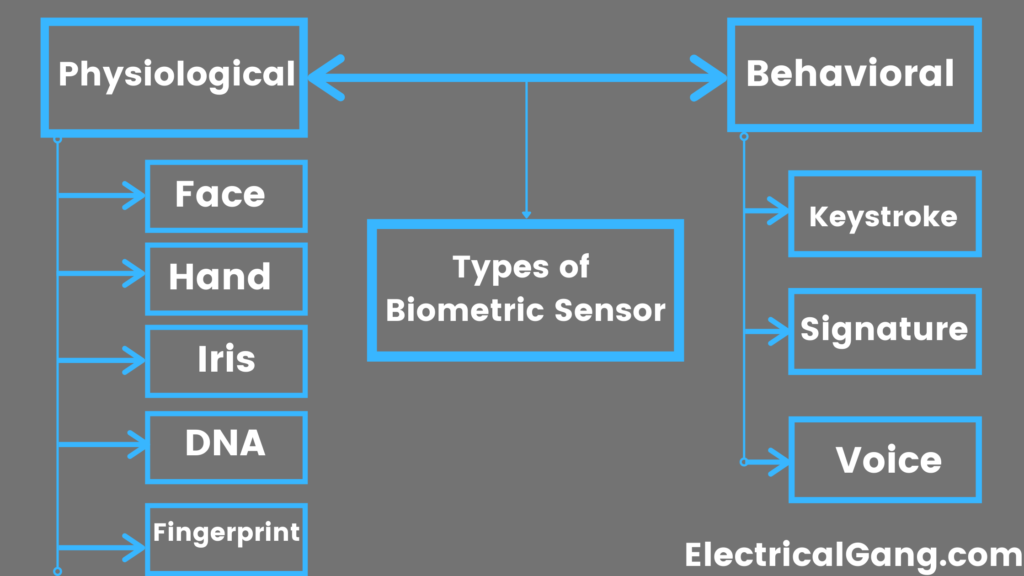
Biometric sensors are divided into two main parts as follows:
- Physiological Biometrics.
- Behavioral Biometrics.
Physiological biometrics mainly includes face recognition, fingerprints, hand geometry, iris recognition, and DNA.
Behavioral Biometrics includes signature, keystroke, and voice recognition. Some of these are discussed below to better understand this concept.
Fingerprint Recognition:

This Recognition must take the image of any person’s fingerprint and record its characteristics with the outlines of arches, vortices, and loops along the edges, minutia, and turquoise. Matching of such fingerprints can be obtained in three ways such as minutia, correlation, and ridge.
- The Minutia-based fingerprint sensor stores the plane in which the set of points and the set of points correspond to the template and input Mintia.
- Correlation-based fingerprint matching overlaps two fingerprint images. And the connection between equivalent pixels is calculated.
- Ridge feature-based fingerprint matching is an innovative method that captures stripes. Because minute-based fingerprint capturing of fingerprint images is difficult in low quality.
Existing methods for capturing fingerprints use optical sensors that use CMOS image sensors or CCDs. Solid-state sensors operate on the principle of transducer technology using thermal, capacitive, piezoelectric sensors, or electric fields. Or ultrasound sensors work on echography in which the sensor sends a sound signal through a transmitter near the finger and the receiver receives the signal.
Fingerprint scanning is very stable and reliable. The security of access devices for locking doors and accessing computer networks is becoming more mutual. Given the current situation, a small number of fingerprint readers have been introduced for approval at bank ATMs.
Don’t Miss: Different Types of Sensors used in Automobiles
Face Recognition:

This type of system is a type of biometric computer application system that can identify or verify a person from a digital image after comparing and analyzing patterns. Such a biometric system is used in a security system.
The current face recognition system is made with facial impressions and this system can recognize 80 nodal points on the human face. Nodal points are nothing but the final points used to measure variables on a person’s face. These include the length and width of the nose, the shape of the cheekbones, and the depth of the eye socket.
The facial recognition system works by capturing data for nodal points on a digital image of a person’s face and the resulting data can be stored as a face print. The system uses facial expressions to accurately identify when conditions are favorable.
Currently, the use of this system focuses on smartphone applications. These include personal marketing, social networking, and image tagging purposes. Social sites like FB use facial-recognition software to tag users in photographs.
The software also enhances marketing personalization, for example, billboards are built with integrated design software. Which recognizes ethnicity gender and the approximate age of the audience to deliver targeted marketing.
Iris Recognition:
This type of system is a type of biometric system used to identify people based on a pattern in a ring-shaped area around the eye pupil. Rainbows usually have blue, brown, gray, or green with difficult patterns that are noticeable on closer inspection.
Don’t Miss: Heat Sensor Circuit | Operating Principle of Heat Sensor Circuit Diagram
Voice Recognition:
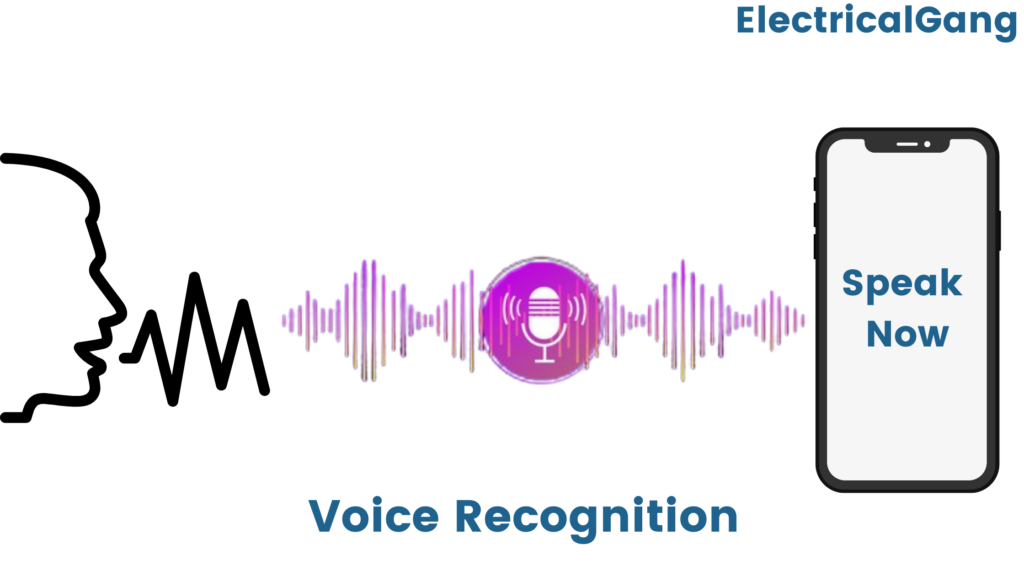
This technique is used to construct speech techniques. Which combines behavior and physical factor. Which can be processed by speech technique. The most important properties used for speech authority are nasal tone, basic frequency, tendency, and cadence.
Voice recognition can be divided into different categories depending on the type of authentication domain, such as the text-independent method and the communication technology in the text-based method.
Signature Recognition:
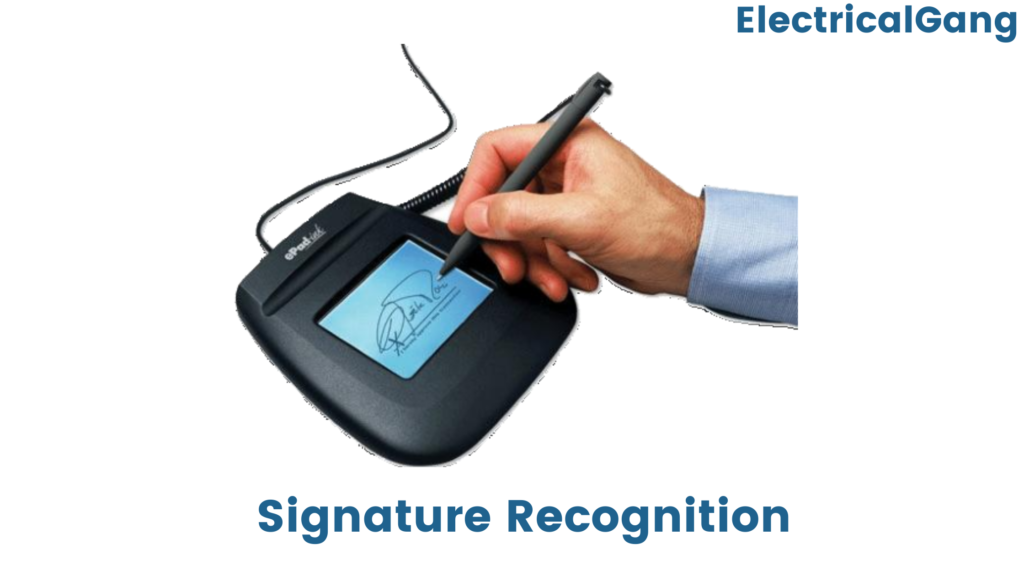
Signature recognition is a type of biometric method. Used for the analysis and measurement of the physical properties of signatures such as pressure, stroke order, and motion. Some biometrics are used to compare visual images of signatures. Signature recognition can be done in two ways, static and dynamic.
In the static position, the customer signs the paper and digitizes it with a camera or optical scanner. This system identifies the signature by checking its shape.
In dynamic mode, the customer puts his signature on a tablet that is digitized, which receives the signature in real time. Another option is to obtain a stylus-powered PDA. Smartphones with capacitive screens also work in some biometrics. Under which the customer can also sign using a pen or a finger. This type of belief is also known as online.
Most Commonly Asked Questions:

What are 3 examples of biometrics?
Types of Biometrics
- DNA matching.
- Eyes – Iris recognition.
- Finger geometry identification.
- Hand geometry recognition.
- Typing identity.
- Voice – Speaker Identities
- Face recognition.
What is biometrics give 2 types of biometrics.
So let us discuss in detail the popular biometrics available in the market.
- Fingerprint.
- Retina scan.
- Keystroke dynamics.
- Voice recognition.
- Facial recognition.
- Signature validation.
- Iris recognition.
Where are biometrics used?
This system is used in systems like ID and National Identity Card for health insurance programs. For which fingerprints can be used. Airport security. This field sometimes uses biometrics such as iris recognition.
Like this post? Could you share it with your friends?
Suggested Read –